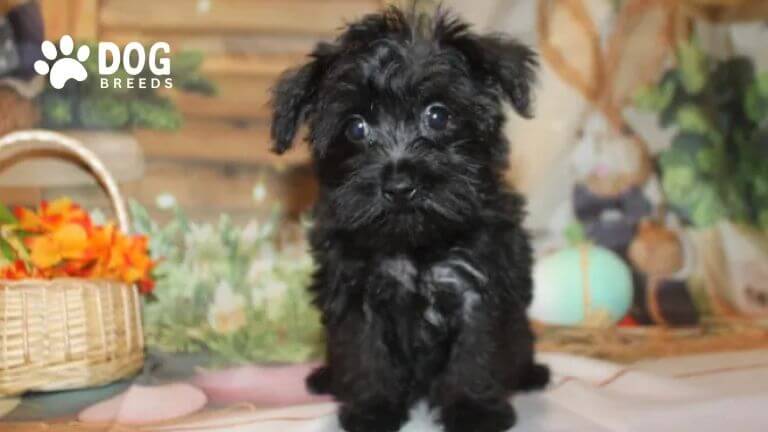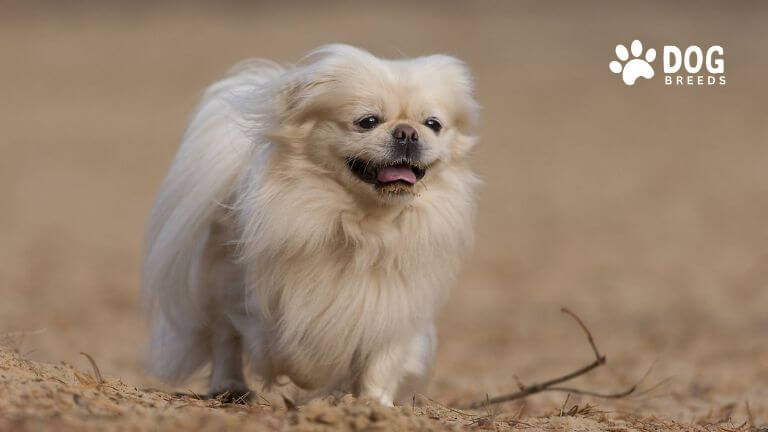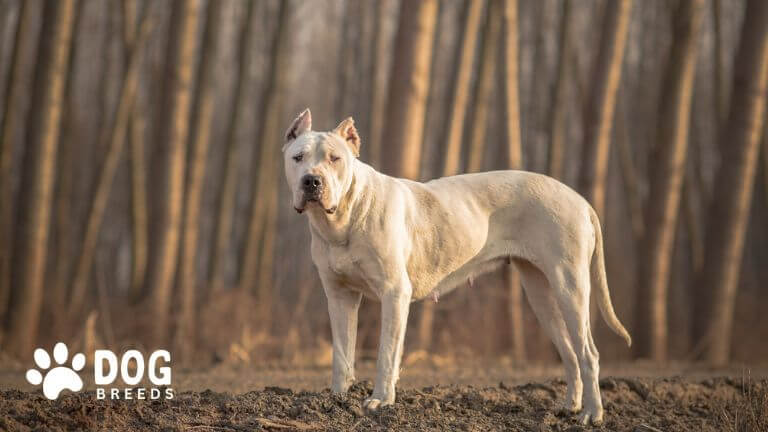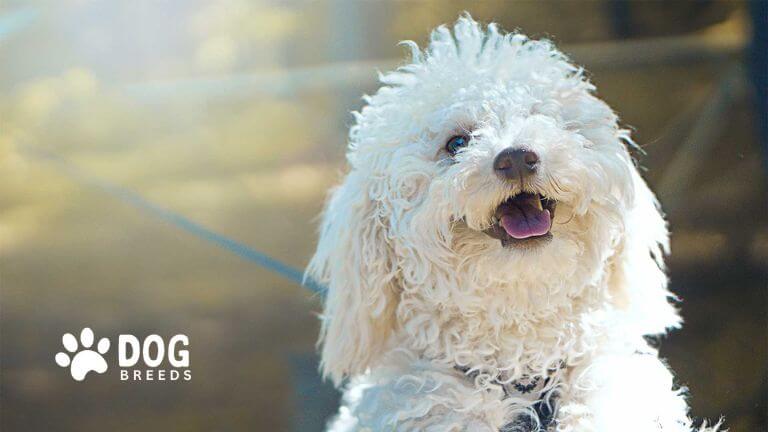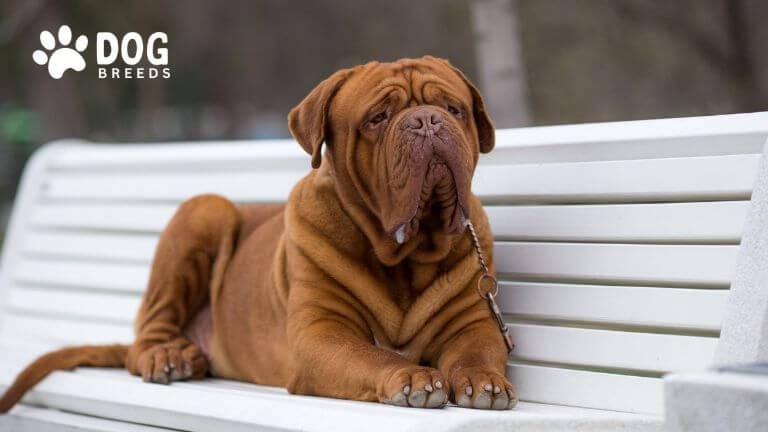Tibetan Mastiff Dog Breed: Majestic Traits & Care Guide
The Tibetan Mastiff is a majestic and ancient dog breed renowned for its massive size, protective instincts, and rich history in Himalayan cultures. Originating from the Tibetan Plateau, this breed served as a guardian for livestock and homes, embodying strength, independence, and loyalty. Its imposing appearance and calm demeanor make it a unique companion for the right owner.
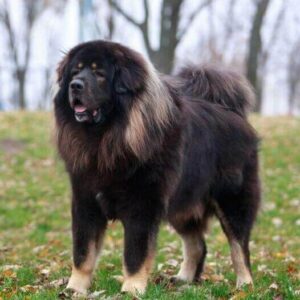
Origins and Significance
The Tibetan Mastiff has roots in the high-altitude regions of Tibet and the Himalayas. Traditionally bred by nomadic tribes, it protected livestock from predators like wolves and leopards. This breed also played a crucial role in Tibetan monasteries, where it guarded sacred spaces. The Tibetan Mastiff’s adaptations to hypoxic conditions at high altitudes highlight its evolutionary resilience, linked to genetic traits like the EPAS1 gene. These dogs are a living testament to the survival skills honed over centuries in harsh environments.
Tibetan Mastiff Dog Breed Overview
| Category | Details |
| Origin | Tibet, Himalayan regions |
| Purpose | Originally bred as guardian dogs for livestock and monasteries |
| Size | Large |
| Weight | Males: 90-150 lbs (41-68 kg) Females: 70-120 lbs (32-54 kg) |
| Height | Males: 26-30 inches (66-76 cm) Females: 24-28 inches (61-71 cm) |
| Coat Type | Thick, double coat; long outer coat with a dense, soft undercoat |
| Colors | Black, black and tan, brown, blue, red, or golden; sometimes with white markings |
| Lifespan | 10-14 years |
| Temperament | Independent, loyal, protective, reserved with strangers, affectionate with family |
| Energy Level | Moderate; needs daily exercise and mental stimulation |
| Trainability | Intelligent but can be stubborn; requires consistent, positive reinforcement |
| Best Environment | Large, securely fenced yards; ideal for experienced owners familiar with large guardian breeds |
| Grooming Needs | Regular brushing (2-3 times a week); more frequent grooming during seasonal shedding periods |
| Health Concerns | Hip dysplasia, elbow dysplasia, hypothyroidism, eye disorders |
Physical Characteristics
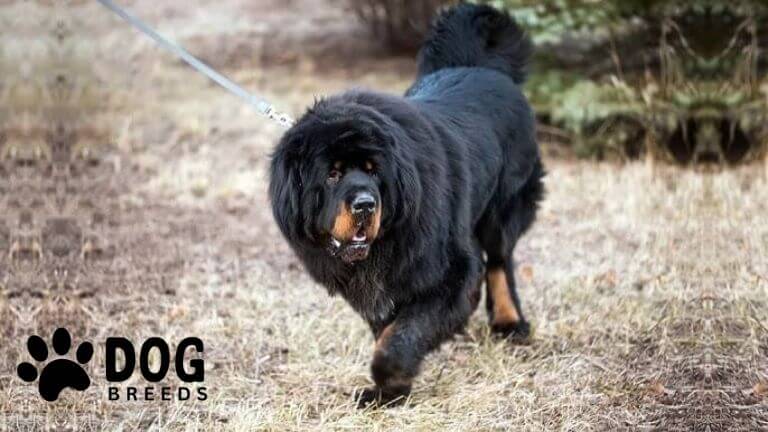
The Tibetan Mastiff is one of the largest dog breeds, exuding power and grandeur.
- Size: Males typically weigh 90-150 pounds and stand 26-30 inches tall at the shoulder. Females are slightly smaller but equally robust.
- Coat: The double coat is thick and weather-resistant, ideal for cold climates. Common colors include black, brown, blue-gray, and golden, often with tan markings.
- Unique Features: The breed’s dense mane around the neck gives it a lion-like appearance. Its expressive eyes and a bushy tail that curls over the back add to its distinguished look.
Temperament
The Tibetan Mastiff is independent, intelligent, and loyal. Known for its protective instincts, it forms strong bonds with its family while being wary of strangers.
- Protective Nature: These dogs are natural guardians, making them excellent watchdogs.
- Independence: They often make decisions on their own, reflecting their working dog heritage.
- Suitability as a Family Pet: While gentle with children, their size and strength require supervision around young kids. Early socialization helps them adapt to various environments.
Health and Lifespan
The Tibetan Mastiff is a generally healthy breed but is predisposed to specific conditions:
- Common Health Issues: Hip dysplasia, hypothyroidism, and eye conditions like entropion are notable concerns.
- Lifespan: With proper care, these dogs live 10-14 years.
- Veterinary Care: Regular checkups, a balanced diet, and exercise are essential to their well-being.
Training and Exercise
Tibetan Mastiffs are intelligent but can be stubborn, making consistent training essential.
- Training Tips: Use positive reinforcement and begin training early. Focus on basic obedience and leash training.
- Exercise Needs: Moderate activity levels suit their build. A daily walk and some playtime in a secure yard are ideal. Avoid overexertion, especially in warm climates.
Grooming and Maintenance
The breed’s thick coat requires regular care to maintain its health and appearance.
- Grooming: Brush the coat 2-3 times a week to prevent matting and reduce shedding. During seasonal shedding, daily brushing is recommended.
- Bathing: Bathe only when necessary, as frequent washing can strip natural oils from their coat.
- Dental and Nail Care: Regular brushing of teeth and trimming of nails help prevent health issues.
Nutrition
Provide a high-quality, balanced diet suitable for large breeds.
- Caloric Needs: Adjust portions based on age, size, and activity level. Overfeeding can lead to obesity and related health problems.
- Diet Composition: Include proteins, healthy fats, and essential vitamins and minerals. Consult a veterinarian for specific dietary recommendations.
Lifestyle Considerations
Tibetan Mastiffs thrive in environments where they have space to move and explore.
- Best Living Conditions: Homes with large yards or rural settings are ideal.
- Compatibility: They are not suited to apartment living or extreme climates. Owners should be prepared for their protective nature and occasional vocal tendencies.
Practical Tips for Prospective Owners
- Early Socialization: Expose the dog to various people, pets, and settings to encourage balanced behavior.
- Secure Fencing: Their guarding instincts may lead to territorial behavior. Ensure a safe and secure yard.
- Commitment: Tibetan Mastiffs require time, patience, and consistent training.
- Research Breeders: Work with reputable breeders who prioritize health and temperament.
Conclusion
The Tibetan Mastiff is a fascinating and majestic breed with a deep historical connection to the Himalayan region. Its remarkable physical traits, protective instincts, and independent personality make it a unique choice for experienced dog owners who can meet its specific needs. While it requires dedicated training, proper care, and a suitable living environment, this breed rewards its owners with unwavering loyalty and a strong bond.
There are plenty of dog breeds to suit all kinds of lifestyles and homes. With a little research, you can find your next best friend!
FAQs
Is Tibetan Mastiff a friendly dog?
The Tibetan Mastiff can be affectionate and loyal to its family but is naturally wary of strangers. Its protective and territorial instincts make it an excellent guard dog but may lead to aggressive behavior if not properly socialized. Early training and exposure to different people and animals can help them develop into more sociable companions.
Why is Tibetan Mastiff so expensive?
Tibetan Mastiffs are costly due to their rarity, historical significance, and maintenance requirements. They are considered a status symbol in some regions, particularly in China, where prices for purebred Tibetan Mastiffs have reached astronomical levels. The costs also include the significant expenses for their care, feeding, and grooming.
What’s the most expensive dog in the world?
Tibetan Mastiffs have held records as the most expensive dogs. A purebred Tibetan Mastiff was reportedly sold for $1.5 million, making it the priciest dog breed globally.
Is the Tibetan Mastiff the most powerful dog in the world?
While the Tibetan Mastiff is strong and has an imposing build, its title as the “most powerful” is subjective. It is known for its immense strength, loyalty, and guarding abilities, but there are other strong breeds, like the Kangal, recognized for their bite force.
What is the most aggressive dog?
Aggression levels in dogs depend on training, socialization, and individual temperament. Breeds like the Pit Bull and Rottweiler are often associated with aggressive tendencies, but proper training can mitigate this. Tibetan Mastiffs can show aggression when guarding their territory or if improperly socialized.
What was the richest dog?
The title of the richest dog belongs to Gunther IV, a German Shepherd who inherited $375 million from his owner, Countess Karlotta Liebenstein.
Is it safe to own a Tibetan Mastiff?
Owning a Tibetan Mastiff is safe for experienced dog owners who can provide the necessary training, socialization, and care. They are large and powerful dogs that require a confident handler to manage their independent and sometimes stubborn nature.
What is the biggest dog breed?
The Great Dane is considered the tallest dog breed, while the English Mastiff holds records for weight. Tibetan Mastiffs are among the largest, with males weighing up to 160 pounds.
What is special about Mastiff?
Mastiffs, including Tibetan Mastiffs, are known for their loyalty, strength, and protective instincts. They are ancient breeds with a long history of guarding livestock and properties.
Is Tibetan Mastiff stronger than a lion?
Tibetan Mastiffs are strong dogs but not stronger than a lion. While they may have the courage to confront predators, a lion’s physical power and size far exceed that of any dog.
What is the strongest dog?
The Kangal is often regarded as the strongest dog due to its remarkable bite force, measured at 743 PSI. Tibetan Mastiffs are also considered strong, with robust builds and guarding instincts.
What do Tibetan Mastiffs eat?
Tibetan Mastiffs thrive on a balanced diet of high-quality dog food, including protein-rich meals. Their diet can also include lean meats, vegetables, and grains. Owners should consult a veterinarian to tailor the diet to the dog’s size, age, and activity level.
Related Dog Breeds:
- Cavalier King Charles Spaniel Dog
- Corgi Dog Breed
- Pembroke Welsh Corgi Dog
- Yorkie Pomeranian Mix (Yoranian)
- Labradoodle Dog
- Schnoodle Dog
- Vizsla Dog Breed
- Brittany Spaniel Dog
- Why Are Dalmatians Not Popular? Uncovering the Truth Behind the Rarity of This Iconic Breed - April 16, 2025
- Top 15 Chinese Dog Breeds: Discover the Best Dogs from China - April 14, 2025
- Dalmatian Dog Breed: History, Care, Personality & Health - April 3, 2025


